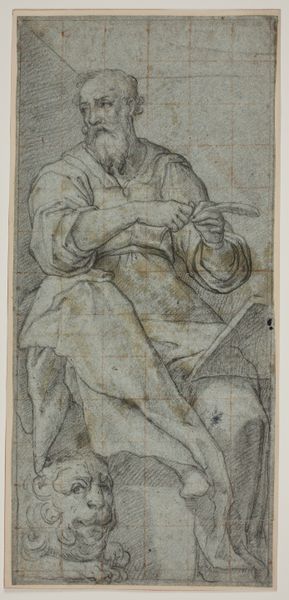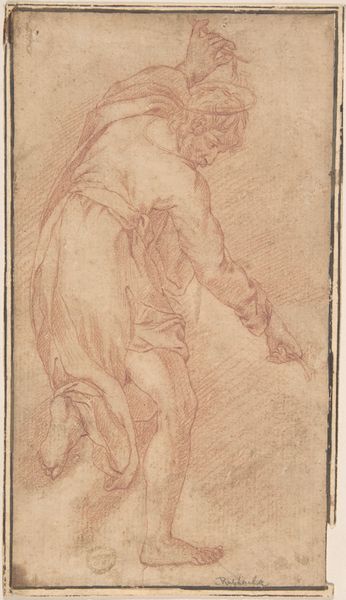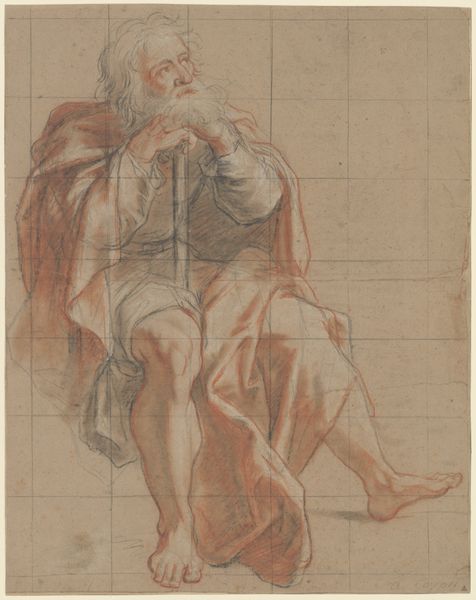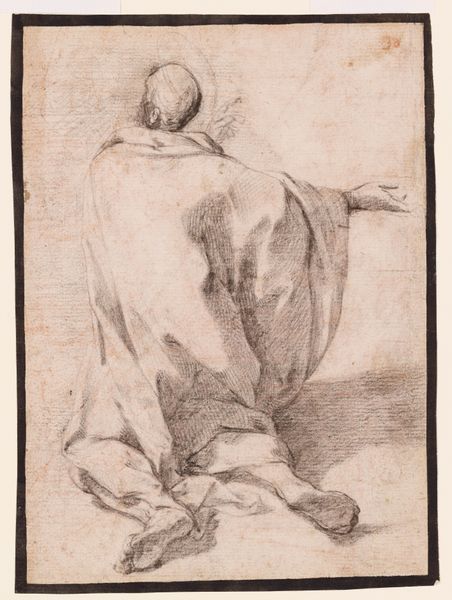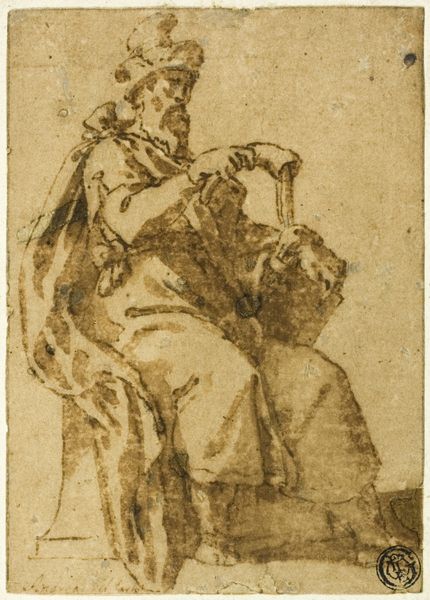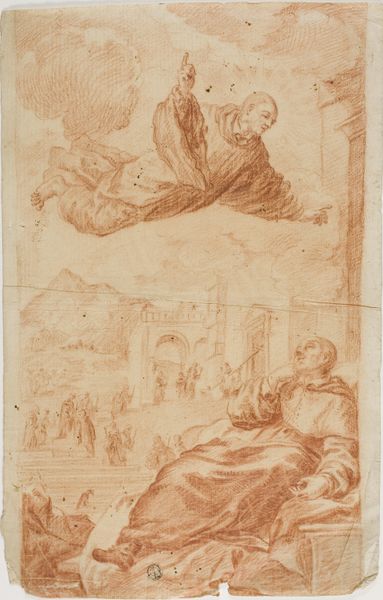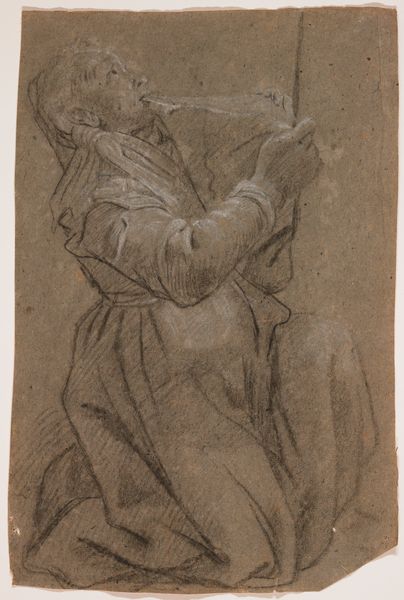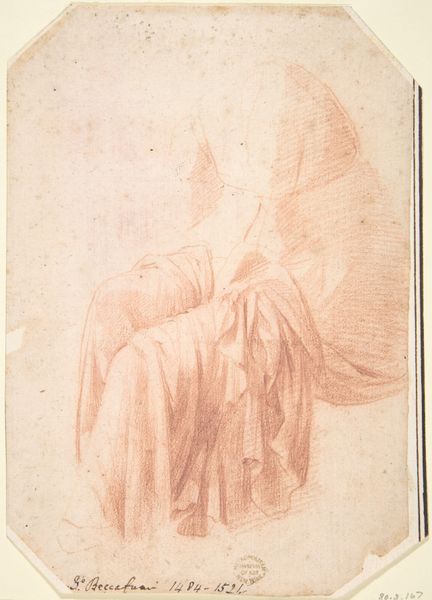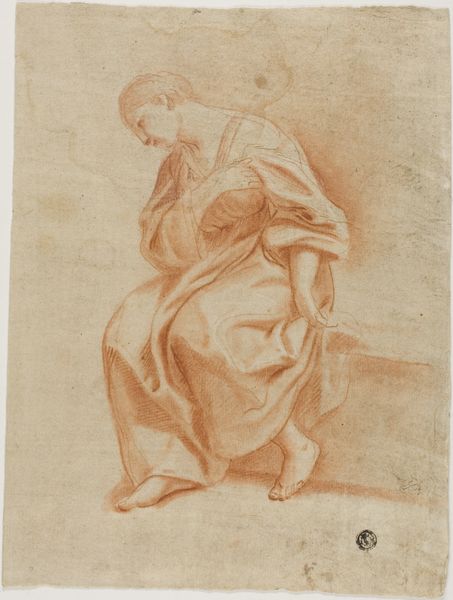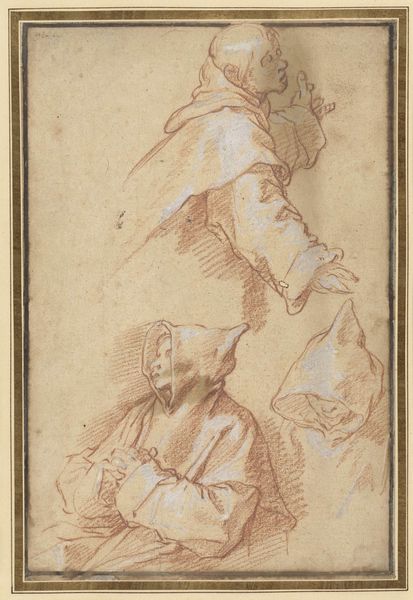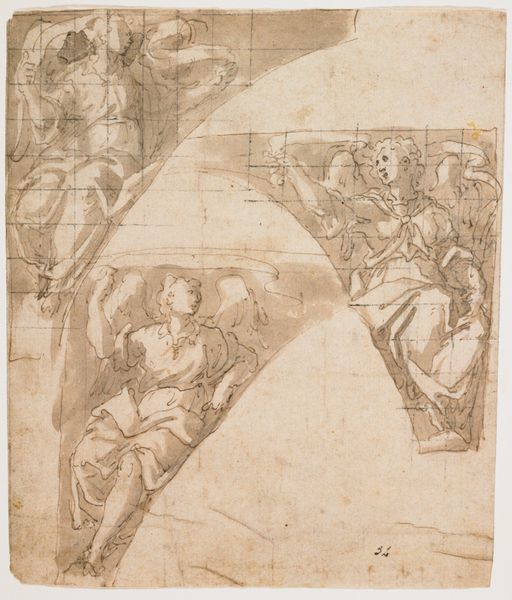
drawing, print, paper, dry-media, pencil, chalk
#
pencil drawn
#
drawing
# print
#
paper
#
dry-media
#
underpainting
#
pencil
#
chalk
#
academic-art
Dimensions: 284 × 181 mm
Copyright: Public Domain
Editor: Looking at Pompeo Batoni’s red chalk drawing, "Study for Saint Bartholomew and Drapery," from around 1740 at the Art Institute of Chicago, I'm struck by its unfinished quality. The gridded lines behind the figure feel very exposed, revealing the artist's process. What is most significant about seeing that process so explicitly displayed? Curator: It's interesting that you focus on the 'unfinished' quality, as drawings like this offer us direct access to the artistic conventions of the time. Consider the context: Batoni was preparing to create a finished painting. These studies weren't necessarily intended for public display. What does it say about the changing role of art and the artist's studio that we now value these preparatory works so highly? Editor: So you’re saying that our current appreciation is different from the piece’s original context. Are these drawings, intended for private study, now considered more 'authentic' in some way? Curator: The concept of 'authenticity' is loaded. The nineteenth century, particularly, fostered a view of the artist as a genius working alone. A drawing, like this one, becomes a direct trace of that genius, untouched by the interventions of workshop assistants or patrons. Does the public consumption of such sketches reinforce this romantic vision, or offer an insight into the mechanics of artistic creation? Editor: I hadn't thought about how ideas of artistic genius impact the public’s reception. Seeing the grid underneath really pulls back the curtain. Curator: Precisely. It allows us to appreciate both the technical skill involved and the carefully constructed nature of even seemingly effortless artistic creations. By displaying this "Study," the Art Institute participates in shaping how we understand Batoni, academic art, and the role of drawings themselves. What lasting impressions do you think this presentation will create? Editor: It definitely pushes me to think beyond the final artwork to consider the context, skill, and public interpretation. Thanks for making me think differently about that! Curator: My pleasure! Hopefully it encourages all to analyze art within its socio-historical and institutional framework.
Comments
No comments
Be the first to comment and join the conversation on the ultimate creative platform.

